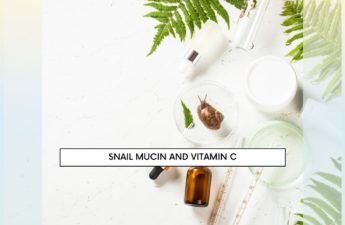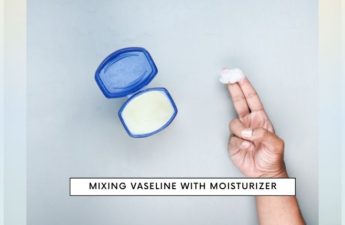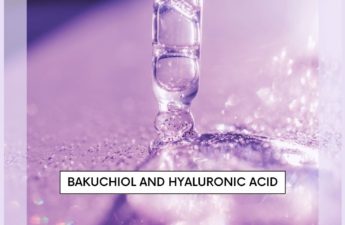Clay masks are having a moment, and top-rated skincare enthusiasts are recommending them left and right for their purifying qualities. These incredibly popular skin treatments absorb excess oils, treat acne and draw out impurities when used correctly. However, it’s never been clear whether these benefits extend to individuals with damaged skin barriers.
You can’t use clay masks on a damaged skin barrier because most of these masks are made of kaolin and bentonite, which excessively draw moisture and sebum from the dermis. Many masks also contain potential skin irritants; not to mention the process of washing them off can further irritate the skin.
This article will discuss the purpose of a skin barrier, how to tell if yours is damaged, how a clay mask impacts this critical layer of the dermis, and explore the impacts of other types of masks on compromised skin.
A Brief Overview of a Skin Barrier
Our stratum corneum, or skin barrier, is the outermost layer of dermis. It has two fundamental components:
- Corneocytes. Corneocytes are the skin cells that comprise the barrier. They are highly durable and full of keratin and natural moisturizers.
- Lipids. Lipids glue the corneocytes together. This adhesive contains fatty acids, ceramides, and cholesterol.
A healthy skin barrier is essential to your overall well-being. Damaged skin impacts far more than simple vanity and aesthetics. To better understand the impact of the skin barrier and the importance of keeping it healthy, we must first understand its purpose.
The Role of a Skin Barrier
Your skin barrier does precisely what the name implies. The dermal layer is a boundary between you and the outside world. The stratum corneum functions in two significant ways: keeping the good in and the bad out.
A skin barrier stands between you and all sorts of environmental toxins. It protects you from pollution, ultraviolet rays, and every poison you don’t want to internalize. Damaged skin barriers allow dangerous elements to enter your body.
A healthy skin barrier keeps you hydrated. This layer of dermis quite literally keeps water inside of you. Damaged skin barriers can’t hold in the liquid you need to stay healthy and hydrated. You lose water and other vital fluids through a compromised dermis. Maintaining healthy levels of hydration is essential to overall skin health.
Signs of a Damaged Skin Barrier
Clay masks are irritating to damaged skin barriers, so it helps to recognize the symptoms and indicators of a compromised barrier to avoid inflicting further damage.
Do not use clay masks if you suffer from any of the following:
- Dry, itchy skin
- Discolored patches of skin
- Wrinkles
- Skin infections-bacterial, viral or fungal
- Thin skin
- Lack of elasticity
- Acne
Any of these symptoms can indicate a damaged skin barrier. Never apply a clay mask to a damaged skin barrier, as they have myriad aspects to impact you negatively.
Why Clay Masks Are Bad for a Damaged Skin Barrier
Clay masks can be detrimental to a damaged skin barrier due to several reasons:
They Are Made of Kaolin and Bentonite, Which Remove Sebum
Kaolin and bentonite are the most popular variety of clay masks. Both are highly absorbent and can overly strip your skin of sebum.
Sebum is a cocktail of fatty molecules. It comprises 57.5 percent triglycerides and fatty acids, 26 percent wax esters, and 12 percent squalene. This oily substance provides several benefits to the skin. These include:
- Moisturization
- Ultraviolet Radiation protection.
- Prevention of oxidative skin damage
- Prevention of staph infection
- Anti-inflammation
- Transportation of antioxidants
- Microbe protection
Damaged skin barriers already lack sebum and clay masks leeching even more sebum irritates and exaggerates pre-existing conditions. An absence of sebum makes your skin dry, itchy, and flaky. Worse still, any skin suffering from these symptoms is more porous and susceptible to microbes and pathogens.
They Contain Ingredients That May Irritate Your Skin
Clay impacts the skin barrier in and of itself. However, most clay masks have additional ingredients that cause skin damage when paired with compromised skin barriers. These include perfumes, lactic acid, and mandelic acid.
Let’s take a deeper look at how the various ingredients can potentially harm your skin.
Perfume
Many perfumes include chemicals that irritate your skin. These compounds cause a topical response, usually a rash. Some people also have perfume allergies. Allergies cause your body to fight against the chemicals actively, triggering complications that may vary with the individual.
These are some of the ways perfumed clay masks cause further damage to already compromised skin barriers, and why they should be avoided by those with delicate skin.
Lactic Acid
Lactic acids are an antimicrobial that can cause:
- Burning
- Peeling
- Itchiness
- Swelling
- Redness
Lactic acids further damage already irritated skin and should be avoided.
Mandelic Acid
Mandelic acid is an almond derivative used to counteract acne. While it’s gentle on healthy skin, it negatively impacts damaged skin barriers. The acid interacting with a compromised skin layer can result in:
- Swelling
- Itchiness
- Redness
Washing Off a Clay Mask May Cause Further Skin Irritation
The sheer process of removing a clay mask can further irritate skin with a damaged barrier. Users often leave their masks on too long, letting the masks dry in. Not only does doing that reduce the effectiveness of the mask, but it also sets up your skin for irritation when washing it off.
Washing off a clay mask that has dried in performs a sort of skin exfoliation. Paired with dry, flaky skin, this process can further damage your dermis.
Types of Clay Masks
Clay masks come in different types, let’s take a look at the options available.
Charcoal Masks
Charcoal masks are trendy right now. However, they may dry out to the skin.
Charcoal masks greatly leech sebaceous filaments from the skin. This causes issues such as:
- Hyper-pigmentation
- Scarring
- Infection
There are several good charcoal mask options. Some of the best are the Clinique City Block Purifying™ Charcoal Clay Mask + Scrub, Dermalogica Charcoal rescue mask, and the Boscia Luminizing Black Mask, all available from Amazon.com.
Kaolin Masks
While these masks still absorb excess moisture, Kaolin clay masks can be less irritated when formulated right. when it is formulated with soothing & moisturizing ingredients such as allantoin and witch hazel extract, it can be used on sensitive skin.
Kaolin clay masks are one of the most common masks available today. Consider the following Kaolin masks from Amazon.com: Kiehls rare earth deep cleansing mask. Mario Badescu Super Collagen Mask is an affordable and quality option as well.
Bentonite Clay Masks
Bentonite clay dries skin in the same way as other clay masks. The minerals in bentonite bind to sebum and oils. When the clay is washed away, so are the moisture on the skin.
Amazon.com has several good options of Bentonite masks available, including Caudalie Instant Detox Mask, Hanz De Fuko Claymation, and Indie Lee Clearing Mask.
French Pink Clay Masks
French pink clay is very rare. As the name suggests, it’s derived from the ash of an inactive volcano in France. The clay absorbs oil but is delicate on sensitive skin.
French Pink Clay Masks are a bit cost-intensive, but worth the expenditure. Australian Pink Clay Porefining Face Mask from Sand & Sky is an excellent option.
Conclusion
Clay masks are beneficial to those with already healthy skin. However, they’re not the best fit for individuals with compromised skin barriers. Not only do they absorb a significant amount of moisture from the skin, but many contain other ingredients that can irritate already damaged dermal layers.
Sources
- Healthline: Skin Barrier Function and How to Repair and Care for It
- Dermstore: How Do Clay Masks Work? We Asked an Expert
- Healthline: Clay Mask Benefits for Your Skin and Hair, and How to Use Them
- Facial Clay Masks: Is it normal for a Face Mask to Burn?
- Nécessité: Apparently, You’ve Been Using Clay Masks All Wrong
- WebMD: What to Know About Your Skin Barrier and How to Protect It
- Pumpkin&Spice: Pink Clay Face Masks vs. Kaolin Clay Masks
- Healthline: Mandelic Acid: Benefits, Uses, Vs. Glycolic Acid, and Precautions
- Veletta Skincare: Spotlight on Ingredients: French Pink Clay
- National Library of Medicine: Understanding the Epidermal Barrier in Healthy and Compromised Skin: Clinically Relevant Information for the Dermatology Practitioner





